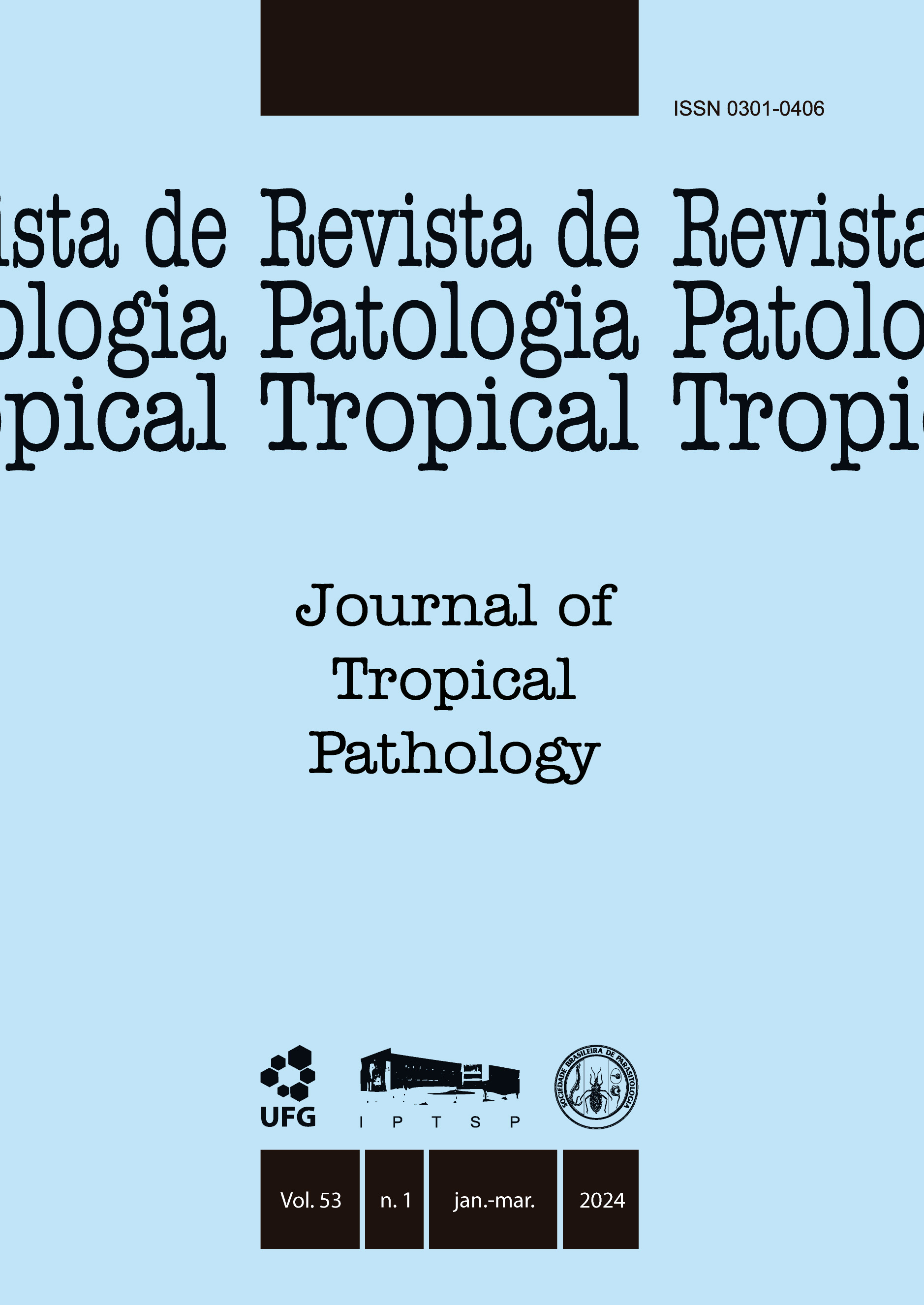Granulomatous hepatitis caused by Calodium hepaticum in a captive mandrill (Mandrillus sphinx) in Brazil
DOI:
https://doi.org/10.5216/rpt.v53i1.76137Abstract
The parasite Calodium hepaticum is a zoonotic, cosmopolitan nematode often associated with rodents. These nematodes have low host specificity and zoonotic potential, affecting the liver of their hosts. The objective of this work is to describe the first case, as far as the authors are aware, of C. hepaticum causing granulomatous hepatitis in captive Mandrillus sphinx. A necroscopic examination was performed and the organs were removed and evaluated; then, 1 cm³ fragments were collected and preserved in 10% buffered formalin. After fixation, the samples were submitted to histotechnical processing to make histological slides. At macroscopic examination, the liver showed heterogeneous red surface with light brown and whitish areas distributed throughout the parenchyma, with diverse punctiform structures measuring 1 to 3 mm in diameter. Histopathology revealed abundant multifocal granulomas with fibrosis and bioperculated barrel-shaped eggs, typical of C. hepaticum. Artificial tissue digestion of the liver was performed and the morphometric measurements of the parasite were as follows: 0.054 ± 0.002 mm in length, 0.031 ± 0.008 mm in width, wall thickness of 0.004 ± 0.0007 mm and opercula of 0.006 ± 0.001 mm. Parasitism was not the cause of death, but an incidental finding. However, further investigations are essential to choose control and prevention measures to prevent the infection of other animal groups and even humans.
KEY WORDS: Nematoda; parasitism; primates; zoo medicine; wildlife pathology.
Downloads
Downloads
Published
How to Cite
Issue
Section
License
The manuscript submission must be accompanied by a letter signed by all authors stating the full name and email address, confirming that the material has not been published or is under consideration for publication elsewhere, and agreeing to transfer copyright in all media and formats for Journal of Tropical Pathology. The authors will not be paid for published articles. They are solely responsible for the content of those articles, even if the Editor holds the right to adjust them to the norms of the journal.
The reviewers will not be paid for the peer review process.

